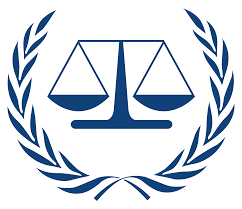INTRODUCTION
In different countries and among people belonging from a whole different culture it has been agreed as a whole that there are certain acts that are allowed during a war and there are certain acts which are not allowed be it towards your enemy or your own troop and this idea evolved for thousands of years and laid the foundation stone of the Humanitarian Laws that we see today.
It is found in old texts of countries like India, China and many other countries in the middle east that there have always been certain guidelines or principles that were followed when enemy states used to go on a war against each other. Like in India, we find principles like one should not kill his enemy when he(enemy) does not possess any type of arms to protect himself in texts like Ramayana and Mahabharata. Apart from that in “On the Law of War and Peace” by the jurist Hugo Grotius, he laid down certain principles and rules to be followed during a war which included prohibition regarding the use of poison and poisoned weapons, rape and killing of all those in enemy territory – even women and children, and prisoners. Thus, the need to have a fixed codified law to honour the basic human rights and needs that cannot be curbed in any situation was felt by everyone.
History of International Humanitarian Law
Henry Dunant for the first time in 1862 came ahead and published Un Souvenir de Solférino as he was deeply moved by the battle fought in Solférino and it’s consequences along with proposing that nations at war during the wartime should mandatorily form some kind of relief societies or temporary nursing facilities to provide due care to the wounded soldiers and citizens. This exact incident first led towards establishing the International Red Cross in 1863 and then Geneva Conventions in 1864.
Although The first attempt to bring together existing laws and customs of war in a document, and to impose them on an army in battle, was the “Lieber Code” (1863). This was intended solely for Union soldiers fighting in the American Civil War, and as such did not have the status of a treaty.
In 1864 the first Geneva Convention “for the Amelioration of the Condition of the Wounded in Armies in the Field”, for the first time introduced the idea of having an International Humanitarian Law and also explained the need of having the same. The first Geneva Convention was a success as twelve nations came together agreeing on certain principles and rules to maintain during wartime along with agreeing to guarantee neutrality to medical personnel during war and signed the Convention. In that same convention, they also adopted a special emblem to mark this togetherness of the nations and this emblem, later on, became the symbol of the International Red Cross Society in 1870.

Development of International Humanitarian Law
After the first Geneva Convention, The Hague Peace Conferences in 1899 and 1907 led to The Hague Conventions which worked and implementations of various international treaties introduced in the previously held Peace Conferences to govern the conduct of war. There were many Principles or Rules or limitations on armaments among the countries at war during the wartime was put up as proposals and based on the votes of the countries present at the conventions they were included as terms in the international treaties between the countries at war, for example, a prohibition on the use of air bombs and chemical warfare was proposed as it the consequences of using such weapons was previously observed. In conclusion, these two Conventions laid down a basic practice of having meetings with representatives from multiple Nations and discuss the interstate policies and form International Laws to be followed by all the present nations. These Conventions, in reality, paved the way for the formation of the League of Nations after World War I in 1919.
World War I
Among the first notable policies that were signed in these conventions were, on 8 February 1928 the use of all kinds of a chemical weapon was permanently banned in warfare after observing the tremendous effect of mustard gas and alike weapons which were used in World War I, in the Biological Weapons Convention in 1972 and the Chemical Weapons Convention in 1993.
World War II
After World War II the governments adopted the four Geneva Conventions of 1949 rewriting the existing convention with the agenda of protecting civilians during warfare when they find themselves under the control of the enemy State. The Geneva Conventions of 1949 was adopted by every single Nation in the world and it was after the formation of the United Nations in the year 1945 the Protocols proposed, had a very broad acceptance and their provisions are considered as customary law to be implemented in the respective countries by the respective Governments.
Here we see a gradual shift of the main focus that these Conventions or the International Humanitarian Laws as at the beginning the sole agenda that they had is to ensure the lives of the soldiers who are actually fighting in the war for their country but after witnessing two world wars they realized that during warfare not only the soldiers get exposed to the potential threat from the enemy state but also the lives of the civilians gets heavily affected by it. So they decided to focus more on civilian safety and hence they introduced two protocols whereas Protocol I deals with international armed conflicts, Protocol II with conflicts of a non-international nature.

International Committee of Red Cross
ICRC was set up in the year 1863 after the first-ever Geneva Convention where the States decided that all the soldiers irrespective of what country or side they belong to in a war if wounded should be taken care of and also laid down a set of ten articles explaining the rules regarding the same.
ICRC has always been the torch bearer in the fields of International Humanitarian Law and has always been closely attached to it. It was ICRC who after every world event like world wars or natural calamities used to go to the respective governments and urged them to make the changes in the policies to be better suited to the people in the society with their current mindset. When the focus of the International Humanitarian Law changed from the safety of the soldiers to the safety of the civilians it urged the governments to expand their reach of the International Laws so that the issues like civilian safety, the safety of prisoners of war, sea borders during warfare gets covered.
The red cross and red crescent emblems of the International Committee of the Red Cross were enshrined in the Geneva Conventions in 1864. But in order to make the protection they represent more easily acceptable to a diverse global audience, an additional emblem – the red crystal – was introduced in 2005.
The Aftermath
After the two world wars and an era of cold wars between the prominent nations on earth when gradually the condition started settling in the Humanitarian Laws also changed its approach. w.
Later in !980s it was realized that it is not enough to only make International Laws to protect basic Human rights but it is very important to aptly implement them in each country and make the people in each country aware about the International laws so that people actually follow it. It was important for the civilians because in wartime they should be aware of the rights they have but also it was very important to make the military of each nation to be aware of the laws as only then they would refrain themselves from doing anything forbidden in the International Humanitarian Laws even to the citizens of the enemy states during warfare.
Conclusion
In this article, it is decided how and why the concept of having an International Humanitarian Law evolved for the very first time and its development till today’s era. Humanitarian Laws are ever-evolving as the rights of Humans are ever evolving depending on the circumstances they are facing. But that does not mean that the efforts of the Geneva Conventions or The Hague Conventions went in vain as those conventions provided us with the basic format and the procedure of having the modern International Humanitarian Laws as per the needs of the changing society and humans.
This article is written by Sagnik Chatterjee, who is currently in IInd Year pursuing BA.LL.B, from Symbiosis Law School, Pune.
Latest Posts
- Job opportunity at EXO Edge, Sahibzada Ajit Singh Nagar, Punjab, India: Apply Now!!
- Internship opportunity at Vishwas Advisors, Kalyan, Maharashtra, India: Apply Now!!
- Internship opportunity at Kulfi Collective, Mumbai, Maharashtra, India: Apply Now!
- Job opportunity at The Neotia University, Diamond Harbour, West Bengal, India: Apply Now !!
- Job opportunity at Morgan Stanley, Mumbai, Maharashtra, India: Apply Now!!
- Job opportunity at VISA INTELLIGENCE CONSULTANCY LLP, New Delhi, Delhi, India: Apply Now!!
- Job opportunity at Amazon Web Services (AWS), Gurugram, Haryana, India: Apply Now!!
- Job opportunity at Stelcore Management Services Private Limited, Mumbai, Maharashtra, India: Apply Now!!
- Job opportunity at Zscaler, Sahibzada Ajit Singh Nagar, Punjab, India: Apply Now!!
- Job opportunity at Irish Expert, Delhi, India: Apply Now!!
- Job opportunity at UnitedLex · Gurgaon, Haryana, India: Apply Now!
- Internship opportunity at Vineforce · Nabha, Punjab, India: Apply Now!!
- CLAT-Peeps! (10)
- Current Affairs (2)
- competitions (132)
- Conferences and Seminars (201)
- Webinar (1)
- Course and Workshops (107)
- Debates (46)
- Eassy Competitions (69)
- Fellowships & Scholarships (56)
- Guest Blogs (6)
- important (29)
- Internships and Jobs (2,317)
- interviews (8)
- moot court (180)
- Opportuintes (2,731)
- Job Opportunity (1,191)
- opportunity (2,559)
- Call for papers (475)
- Quizes,fests and others (298)
- Work Opportunity (836)
- Our Blog (1,049)
- Administrative Law (17)
- ADR (13)
- Arms Act (2)
- Case Analysis (205)
- Company law (36)
- Constitutional Law (143)
- Consumer Protection Act (17)
- Contract Law (62)
- CPC (10)
- Criminal Law (140)
- Cyber Law (13)
- Environmental Laws (30)
- Evidence Act (20)
- Family Law (12)
- General (205)
- International Humanitarian Law (8)
- International law (23)
- IPR (10)
- Jurisprudence (13)
- labor laws (7)
- Maritime Laws (1)
- Partnership Act (2)
- personal law (33)
- Taxation (10)
- Tort (64)
- Transfer of Property (2)
- Our Services (11)
- career advice (2)
- others (6)
- Top Stories (524)
- Uncategorized (720)
Archives
- November 2023
- October 2023
- September 2023
- August 2023
- July 2023
- June 2023
- May 2023
- April 2023
- March 2023
- February 2023
- January 2023
- December 2022
- November 2022
- October 2022
- September 2022
- August 2022
- July 2022
- June 2022
- May 2022
- April 2022
- March 2022
- February 2022
- January 2022
- December 2021
- November 2021
- October 2021
- September 2021
- August 2021
- July 2021
- June 2021
- May 2021
- April 2021
- March 2021
- February 2021
- January 2021
- December 2020
- November 2020
- October 2020
- September 2020
- August 2020
- July 2020
- June 2020
- May 2020
- April 2020
- February 2020
- January 2020
- November 2019